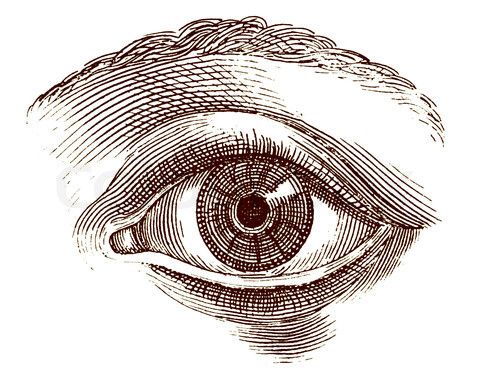This man – known variously as Alexander Alane / Alesius / Ales / Aless – keeps popping up in recent reading. A native of Edinburgh, born in 1500, he was in Fife when young Patrick Hamilton, not long back from Luther's Germany, was arrested and trialled before a kangaroo church court.
Alesius played an important role linking the Reformations of Scotland, then Germany, then England. He is believed to have been planning to translate Luther's German Bible into Scots, but it's more likely that he intended to use the original Greek and Hebrew manuscripts which Luther himself had used. Ales is said to have been the first Scot to meet Jean Calvin - this was at Worms in Germany in December 1540. In his time in England he was occasionally referred to as Alexander Alesius, Scotus, Doctor Theologiae.
Somebody needs to write Alesius' biography in a modern, accessible format. Meanwhile this blog post might help to direct others to the best online sources I've been able to find:
• The 1857 book by Peter Lorimer*, entitled Precursors of Knox, has a lengthy section on 'Alexandre Alan, or Alesius' (click here) . The back of the book shows that Lorimer intended to publish a standalone biography of Alane, entitled Alexander Alane, commonly called Alesius, the Wanderer, but this may have been publishers' enthusiasm as I've not been able to find it anywhere.
• Various footnotes from p232 onwards contain a lot of detail about Alesius work and writings, including his eyewitnesa account of the martyrdom of Patrick Hamilton (in the original Latin) on p236, and details of his change of surname from Alane to Alesius (p241).
• Lorimer's work The Scottish Reformation A Historical Sketch has much on Alesius, in chapter I section IV and in chapter II section III (click here), including a letter he wrote to Philip Melancthon describing a brutal martyrdom of a husband and wife in Perth in April 1544.
...Three days ago, there were here several countrymen of mine, who declare that the cardinal rules all things at his pleasure in Scotland, and governs the governor himself. In the town of St Johnston, he hung up four respectable citizens, for no other cause than because they had requested a monk, in the middle of his sermon, not to depart in his doctrine from the sacred text, and not to mix up notions of his own with the words of Christ Along with these a most respectable matron, carrying a sucking child in her arms, was haled before the tribunal and condemned to death by drowning. They report that the constancy of the woman was such, that when her husband was led to the scaffold, and mounted the ladder, she followed and mounted along with him, and entreated to be allowed to hang from the same beam. She encouraged him to be of good cheer, for in a few hours, said she, I shall be with Christ along with you. They declare also, that the governor was inclined to liberate them, but that the cardinal suborned the nobles to threaten that they would leave him if the condemned were not put to death...
• A very detailed and accessible account of his life can be found in Christopher Anderson's The Annals of the English Bible Vol II (1845) from p 426 onwards which is available here. This includes a very odd account from Alesius' own childhood memory where he was 'teleported' it was thought due to him wearing portions of scripture around his neck, as he says '... in certain parts of Ireland it is the practice still, to operate as a charm ...'. Not unlike Acts 8 v 39. The Historical Index at the end is a useful summary of his life.
• The Post-Reformation Digital Library has 36 titles by him (click here)
• The COPAC web catalogue contains 134 items linked to him in some way (click here)
• A street in Leipzig is named after him (Alexander-Alesius-Straße, 04316 Leipzig). He was a Professor at the University from 1542–65, where he died on St Patricks Day in 1565.
• A 2013 PhD thesis entitled Propaganda and Persuasion in the early Scottish Reformation by Elizabeth Leons Tapscott is online here and is packed with information about Alesius.
..............
* Rev Peter Lorimer (1812– 1879) was born in Edinburgh but moved to London and became Professor of Hebrew and Biblical Criticism at the English Presbyterian College of London (now Westminster College, Cambridge). Perhaps somewhere in the College archives are Lorimer's manuscripts on Alesius. There is an article on the College website about Lorimer.
** Christopher Anderson (1782–1852) was also Edinburgh born, founder of the Gaelic School Society and the Edinburgh Bible Society. In 1830 he published Historical Sketches of the Native Irish which is available here on Archive.org. Biographical Wikipedia page here.
 On 6th August 1649, the General Assembly appointed a committee to “overtake the review and examination of the new paraphrase of the Psalms”. This would form the second Scottish Psalter, the first having been compiled in 1564–5. Those appointed were –
On 6th August 1649, the General Assembly appointed a committee to “overtake the review and examination of the new paraphrase of the Psalms”. This would form the second Scottish Psalter, the first having been compiled in 1564–5. Those appointed were –






 I am gradually refreshing a series of blog posts from 2011 to have their own dedicated blog which
I am gradually refreshing a series of blog posts from 2011 to have their own dedicated blog which